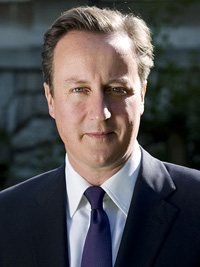
Election perfection?

Will you vote?
It's just over a week until the general election and at this stage you'd be forgiven for feeling sick and tired of it. There is, however, an interesting bit of maths behind voting that is fun to think about.
One thing that makes this general election different from most of the ones that came before it is that there are more than two parties prominently involved. A hung parliament seems likely, which is why smaller parties may be needed for a coalition. That's a rather unusual situation because the UK has a first-past-the-post system: everybody has one vote, in every constituency the candidate with most votes wins, and the party that wins the majority of constituencies goes on to form the government. Under normal circumstances, when there's a bigger difference between the two main parties, smaller parties don't get much of a look-in. Many people are unhappy with the post-past-the-post system and point to the various alternatives that exist. So is there a perfect voting system?
That's the interesting result: mathematically speaking, there isn't. (We already explored this back in 2010, but the maths hasn't changed, so the following is an updated version of the 2010 article.) To see why perfect voting is mathematically impossible, let's remind ourselves of what an election is actually trying to do. There is a population of voters, each of whom, if pressed hard enough, can come up with a preference ranking of the candidates: whom they like most, whom they like least, and everything in between, with some candidates possibly occupying equal position. Ideally, a voting system should take these millions of preference rankings as input, and return a single ranking of candidates that makes reasonable democratic sense. The government can then be formed on the basis of this single ranking.

Will you vote for him?
But what's democratic sense? First of all, we clearly don't want there to be a dictator, so the system should reflect the wishes of more than just one individual. Secondly, the system should reflect voters' wishes reasonably accurately. At the very least we should require that if all voters prefer candidate x to candidate y, then x should come above y in the final result (this condition is sometimes called unanimity). Also, there shouldn't be room for ambiguity: the voting system should always return exactly one clear final ranking (this condition is known as universality).
In the 1950s the economist Kenneth Arrow asked himself whether there can be a voting system which satisfies these pretty minimal criteria. He added one slightly more subtle condition: in the final result, whether one candidate is ranked above another, say Ed Miliband above David Cameron, should only depend on how individual voters ranked Miliband compared to Cameron. It shouldn't depend on how they ranked either of the two compared to a third candidate, for example Nick Clegg.
For example, suppose that Miliband has just won the election, having come top of the final ranking, when Clegg becomes embroiled in a scandal, which sees him slide to the bottom of all voters' preference rankings. Then this should not have any effect on the fact that Miliband was more popular than Cameron: a re-run of the election should still return Miliband as the winner, as long as voters didn't change their relative rankings of Miliband and Cameron. Arrow called this condition independence of irrelevant alternatives. In our example, poor Clegg has become irrelevant (some would say he already is), but this shouldn't effect the contest between Miliband and Cameron. Independence of irrelevant alternatives is an important condition because non-compliance of a voting system means that the ranking of outside candidates can have an effect on the outcome.

Or do you prefer him? Image: Department of Energy.
Arrow proved mathematically that if there are three or more candidates and two or more voters, no voting system that works by taking voters' preference rankings as input and returns a single ranking as output can satisfy all the four conditions. Put differently, only a dictatorship (in which one voter's ranking determines the result) can simultaneously satisfy unanimity, universality and independence of irrelevant alternatives. His theorem, called Arrow's Impossibility Theorem helped to earn him the 1972 Nobel Prize in Economics.
As an example of how Arrow's theorem plays out in practice, think of the first-past-the-post system. The winner will be the candidate with most top votes, the runner-up the candidate with second-most top choices, and so on, with all the lower rankings being ignored. This system satisfies the first three conditions, but it can fail independence of irrelevant alternatives.
To see why, suppose that in a direct election with four candidates (Miliband, Cameron, Clegg, and Natalie Bennett) voters' preferences split into four groups:
| Group 1: 41% | Group 2: 39% | Group 3: 17% | Group 4: 3% | |
| 1st preference | Miliband | Cameron | Clegg | Bennett |
| 2nd preference | Clegg | Clegg | Miliband | Cameron |
| 3rd preference | Cameron | Miliband | Cameron | Clegg |
| 4th preference | Bennett | Bennett | Bennett | Miliband |
Then Miliband (41%) wins over Cameron (39%), with Clegg coming third (17%), and Bennett last (3%). Now suppose Bennett does something terrible (like having a mind blank in an important interview) and slides to the bottom of all voters' rankings. We get the groups:
| Group 1: 41% | Group 2: 39% | Group 3: 17% | Group 4: 3% | |
| 1st preference | Miliband | Cameron | Clegg | Cameron |
| 2nd preference | Clegg | Clegg | Miliband | Clegg |
| 3rd preference | Cameron | Miliband | Cameron | Miliband |
| 4th preference | Bennett | Bennett | Bennett | Bennett |
Then Cameron (42%) wins over Miliband (41%) with Clegg coming third (17%), and Bennett last (0%). So even though no voter has changed his or her relative preference of Miliband versus Cameron (58% still prefer Miliband to Cameron) Cameron has beaten Miliband to the top spot.
An alternative to first-past-the-post which does satisfy independence of irrelevant alternative is to have candidates battle it out in pair-wise contests. In a three candidate election with Miliband, Cameron and Clegg, you first pit Miliband against Cameron: if there are more voters preferring Miliband to Cameron than Cameron to Miliband, then Miliband is ranked first, and vice versa. Then you pit Cameron against Clegg to find the relative ranking of these two, and finally you pit Clegg against Miliband. This is arguably more democratic than first-past-the-post, as any winner would be preferred to the other candidates by a majority of the electorate.
But as Arrow's theorem predicts, this system has another potential flaw. Suppose that voters split into three groups with the following rankings:
| Group 1: 34% | Group 2: 33% | Group 3: 33% |
| Miliband | Cameron | Clegg |
| Cameron | Clegg | Miliband |
| Clegg | Miliband | Cameron |
Then the Miliband-Cameron battle is won by Miliband (67% of the electorate prefer him to Cameron) and the Cameron-Clegg battle is won by Cameron (67% prefer him to Clegg), so the ranking should be [Miliband, Cameron, Clegg]. However, the Miliband-Clegg battle is won by Clegg (66% prefer him to Miliband), so Clegg should really come above Miliband. What we have here is called a Condorcet cycle: Miliband beats Cameron, Cameron beats Clegg, but Clegg beats Miliband. There is no way of coming up with a definite ranking, and a majority of the electorate will be unhappy no matter who is chosen as winner, because they preferred someone else. This system violates our third condition of universality.

Or maybe him? Image: Chatham House.
So does Arrow's theorem mean that democracy is impossible? Not unless you're a mathematical absolutist. The theorem doesn't say that every voting system always returns horribly unfair results, but that there always is a theoretical possibility that one of the four conditions might be breached if voters happen to vote in a particular way. Whether or not these breaches are a terrible thing depends on how often they are likely to happen — you might argue that the cyclical split in the last example is unlikely to occur in a general election — and how important you think the condition is that's being violated. Non-dictatorship is clearly pretty fundamental, but some people argue that we could do without independence of irrelevant alternatives. Other people support voting systems in which candidates aren't ranked, but rated, as happens for example in approval voting (see Plus article Approving a president), in which people are simply asked to approve or not approve of a candidate, and which escapes Arrow's theorem. It's a question of carefully weighing up pros and cons to choose the best system. And while the first-past-the-post system is undoubtedly crude, there is also an argument for simplicity: the fairest system is of no use if it's so complicated that voters end up not bothering to vote.
Arrow's theorem gives mathematical backing to something we already know from experience: that it's really hard to design a system that produces a reasonably fair result in all circumstances. But when it comes to democracy mathematics is as limited as it is essential. It can do nothing about the social and political issues that keep people from exercising, or being able to exercise, their right to vote.